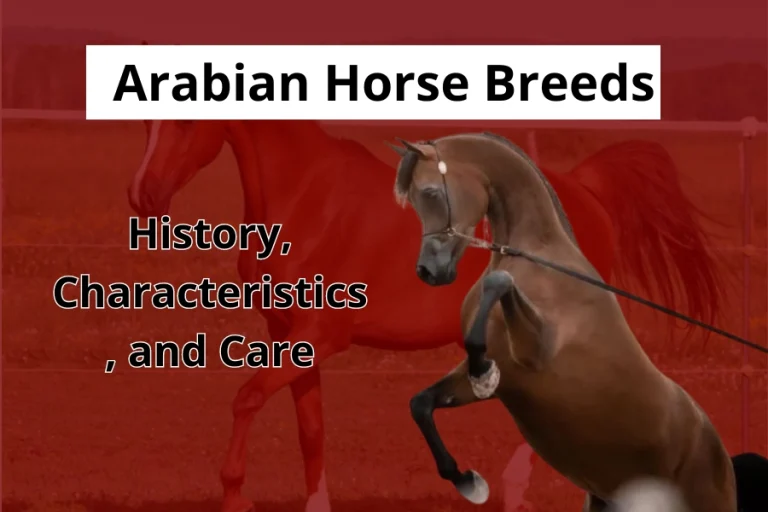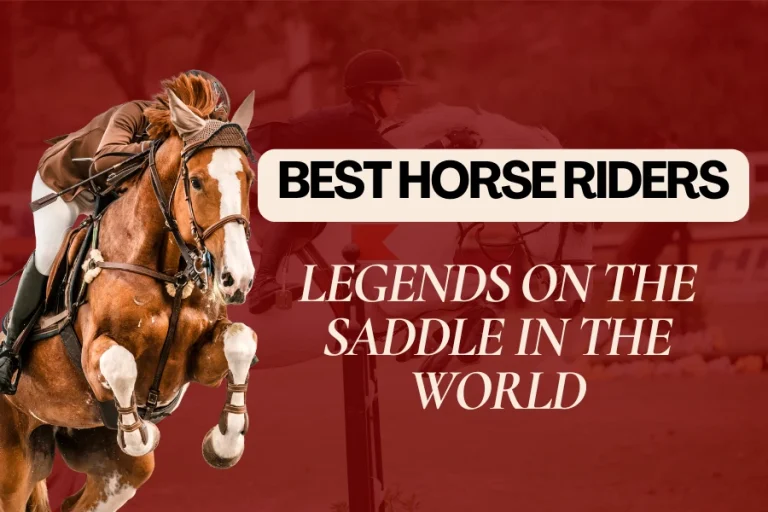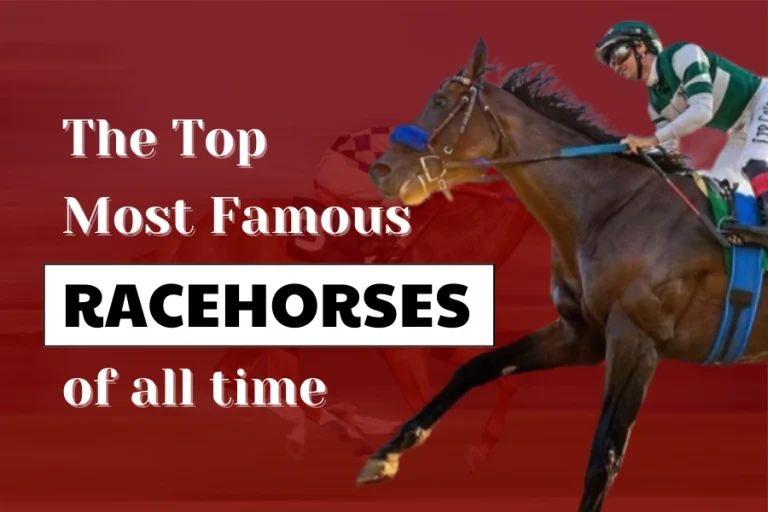7 Most Splendid Spotted Horse Breeds Around The World
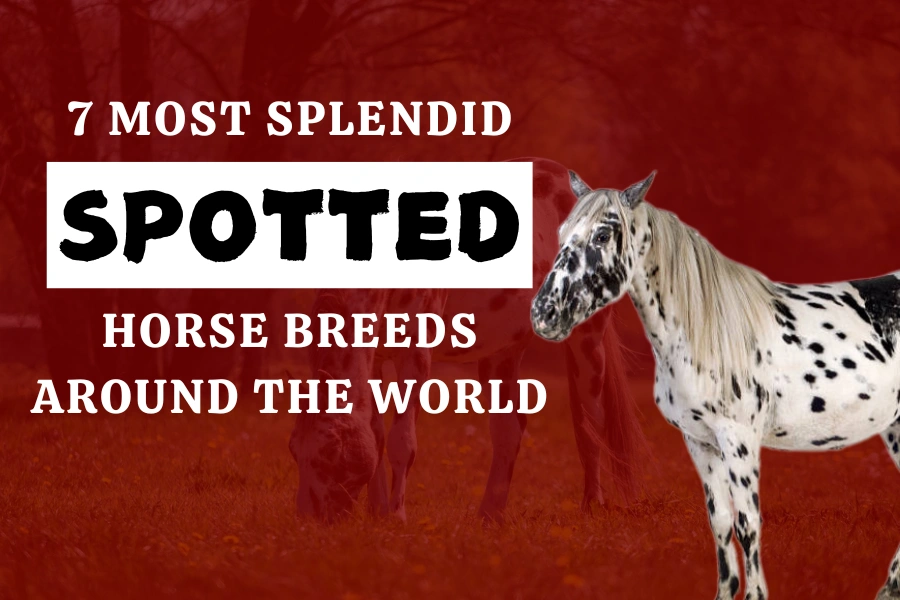
This creature of grace and power, the horse, is often captivating in its sleek coat and flowing movements. However, some of them have an extraordinary line of attraction: the spotted coat. From the iconic Appaloosa to lesser-known breeds, they are living works of art, their bodies adorned with nature’s masterpieces.
Beyond their flashy appearance, breeds of horses with spotting have rich histories and unique characteristics. In these explorations, you will become familiar with the 7 most charismatic spotted horse breeds and learn some interesting facts behind such intriguing coat patterns. Keep reading and find out how many breeds you know in the list.
What Causes A Horse With Spotted Coat?
Genetics is responsible for all of the captivating patterns on a spotted horse’s coat. Picture genes as very tiny artists painting each horse pattern. These genetic painters use an inherited palette of DNA from the parents that will determine whether or not a horse is going to have spots and how many.
These fantastic patterns are regulated by specific genes—from the leopard spots of Appaloosas to the bold patches on Paint horses. For this reason, when a foal is born, what appears is the coat pattern, just like an unfolding masterpiece.
These genes do much more than just create beautiful appearances; they tell of survival. The spots helped horses turn color to blend with the environment, thus protecting them from predators in the wild. Therefore, beyond the striking looks, these genetic characteristics have historical significance in the survival and evolution of the species.
7 Most Beautiful Spotted Horse Breeds
Now, let’s admire the 7 most beautiful horse breeds below. Just get ready to be charmed by the magnificence and differences of these momentous creatures. We will start with the most famous one: Appaloosa.
Appaloosa
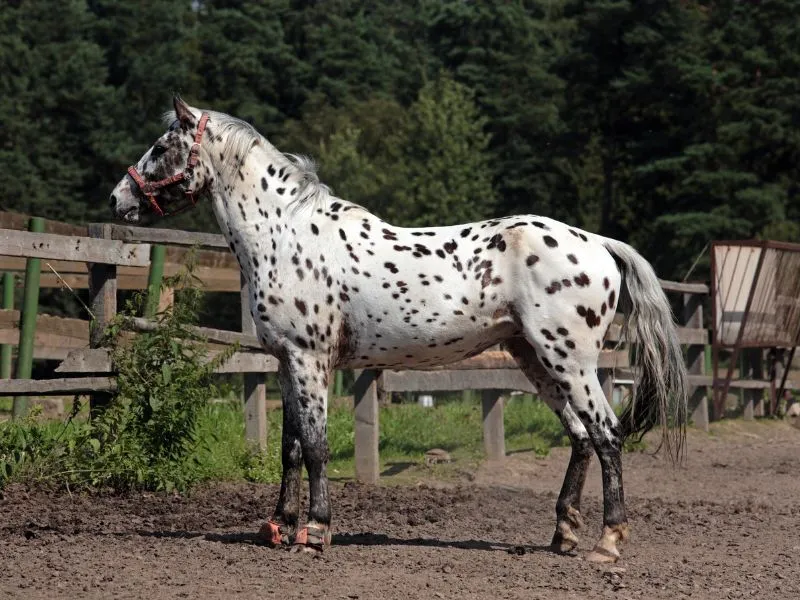
Appaloosa is one of the most celebrated and cherished spotted horse breeds. They are known for their colorful leopard-spotted and blanket coat patterns. However, not all Appaloosa horses will have spots on the coats.
Those Appaloosas have beautiful and distinct leopard spots on the whole body, even on the hooves. The spots will vary in shape, size, and density making each horse unique.
While leopard-coated horses have spots on the white or bright-colored coat, most of the blanket Appaloosas have dark-shaded coats, such as chestnut, bay, black, or dun. But why are they called “blankets”? Because there is a white or bright patch on their backs, which just looks like a blanket.
Appaloosas horses also have special eyes with pale sclera. This makes them more resemble to the eyes of humans. They are tall from 14 to 16 hands and are known as dexterous, solid, and shrewd horse breeds.
Originating from the Nez Perce people of North America, most of these Appaloosa have easy temperament and are the best choices for family horses. They are versatile and used in a variety of disciplines including Western riding, trail riding, and even English riding events.
Tiger Horses
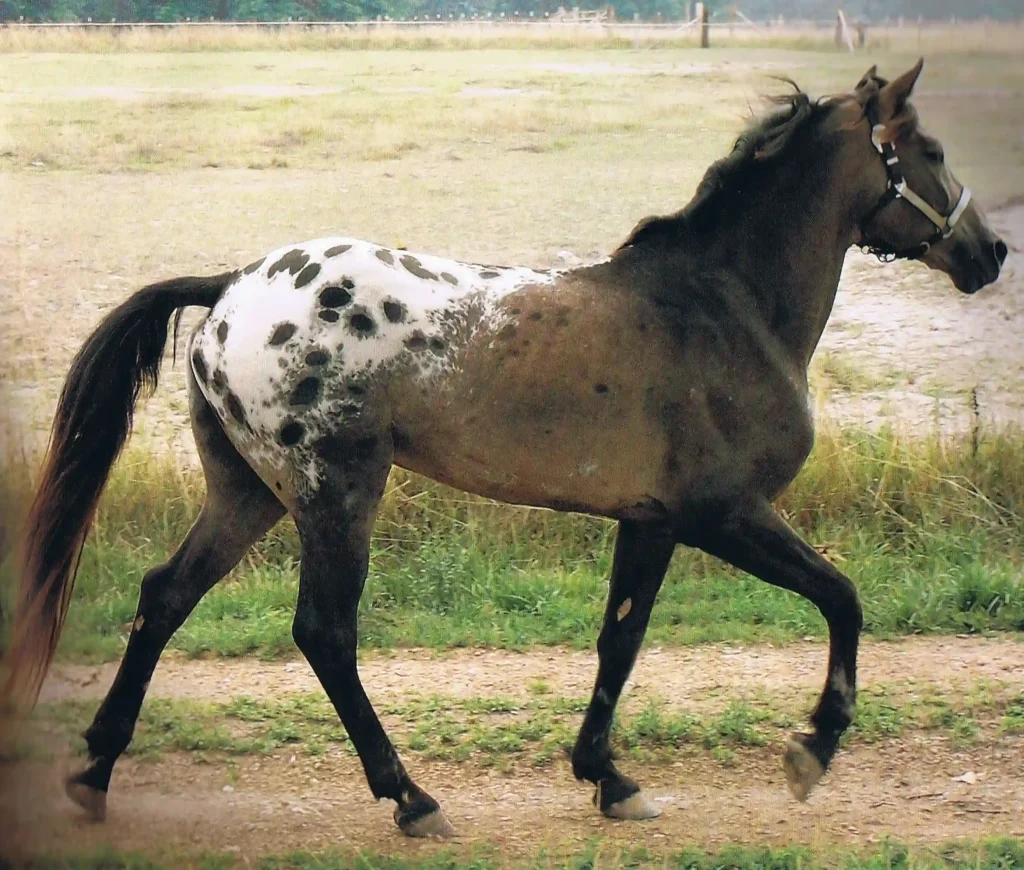
Tiger Horse is famous for its unique coat patterns, which can include stripes, spots, and a combination of both. This type of breed is still relatively new and is undergoing continued development. Its direct ancestors are the Spanish Jennet and Chinese Soulon. Their height is 13 to 16 hands, and they are quite popular trail riding mounts.
The Tiger Horse is noted for its very comfortable four-beat gait called the “shuffle.” It is a breed considered good as a ranch horse. They too will do well on occasions requiring separate riding and the ring.
British Spotted Pony
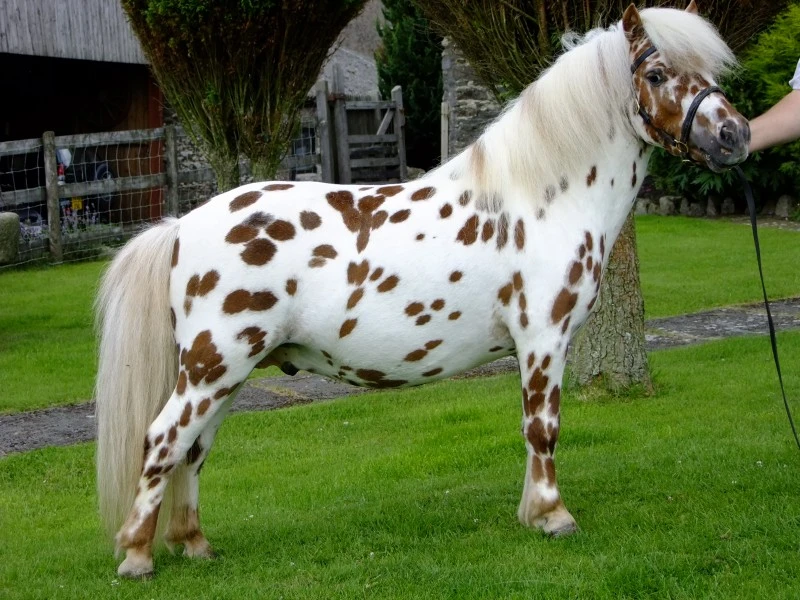
The British Spotted pony is a striking breed with a small appearance of 8-14 hands, noted for their attractive spotted coat color, and has origin in the British Isles. They come in leopard spots and blanket spots, among others. The ones most frequently seen are dark on a white coat. You will also find many individuals with white snowflake spots on their dark-based coats.
British Spotted Horses are cherished for their neighborly and sweet nature. Thus, they are the completely perfect pick to be companion animals for children. A Miniature British Spotted Pony stands lower than 42 inches high and is suitable for children to learn to ride.
Miniature Horse Breeds
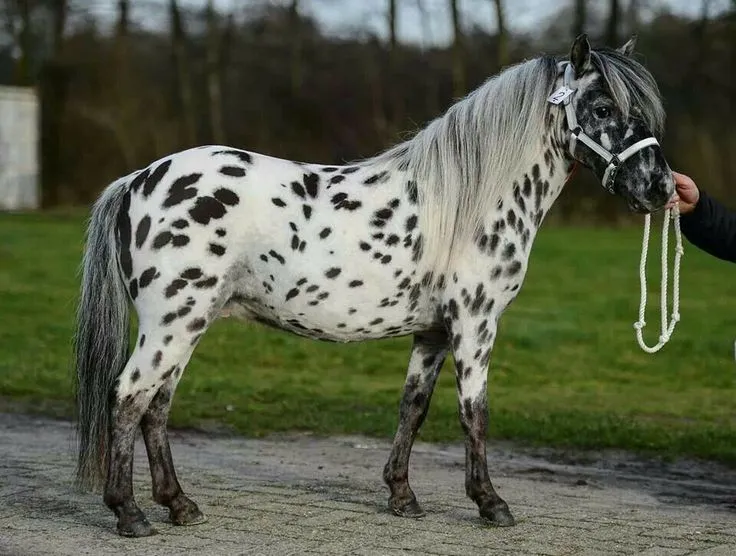
There are also spotted varieties of Miniature Horses, which exhibit some of the same patterns noted on larger breeds such as the Appaloosa. These tiny horses, standing only 34-38 inches tall, have found a new niche as companion animals and in therapy programs. Yet, a miniature horse sporting a spotted coat is every bit as striking and beautiful as his larger brethren.
Specifically bred to be child-friendly, they usually possess gentle nature and can be a great option to ride for a “mini person”. This kind of Miniature originally was the pet of European nobility. Then, people used them and Shetland ponies to work in the mines.
Nez Perce Horse
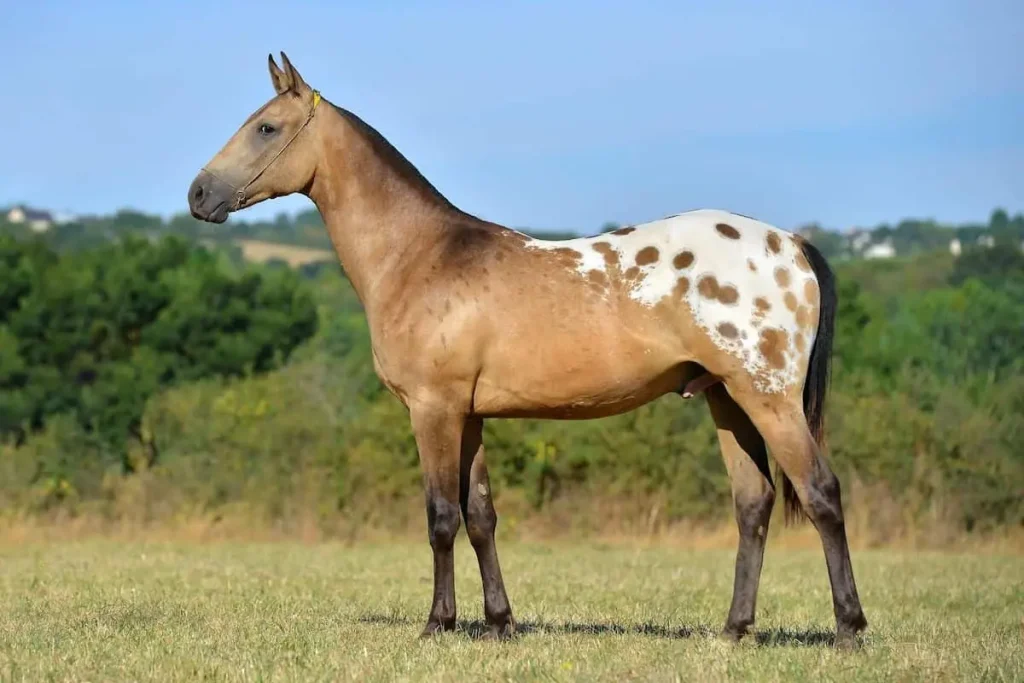
The Nez Perce Horse is a relatively new breed that continues the legacy left behind by the Appaloosa and the Akhal-Teke. This breed belongs to the Nez Perce tribe and is famous for its power, intelligence, and refinement with a spotty coat. The most frequent use for Nez Perce Horses is in riding and equestrian sports.
They typically stand 15 to 16 hands high, and are slim, leggy, with impressive speed. Very often, they can come in the colors of buckskin or palomino. Many proudly boast the classic Appaloosa spotted coat or blanket. They are versatile and comfortable under saddle whether they’re out on a trail for a day of riding or in the show ring.
Pony Of The Americas
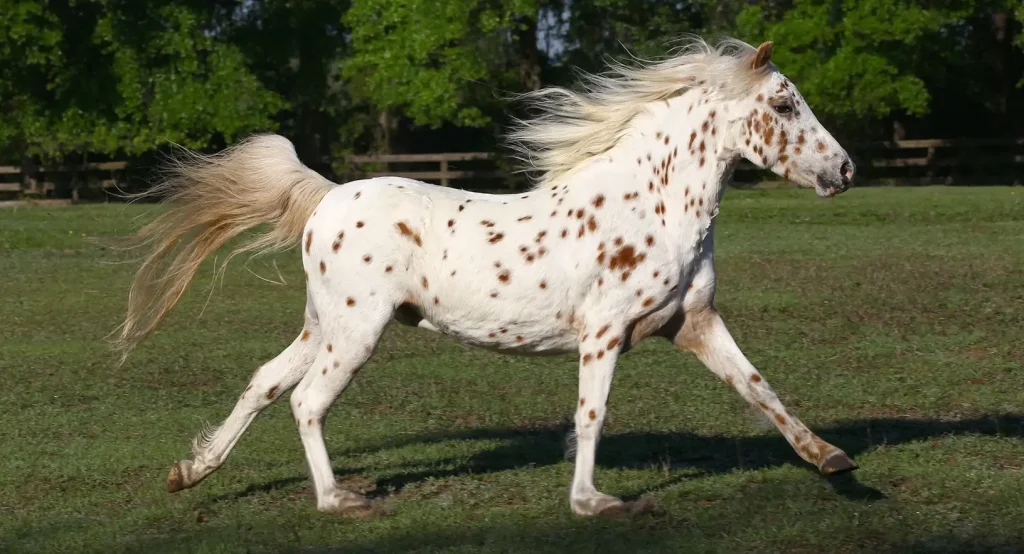
The Pony of the Americas breed brings together both worlds in ponies and horses, with characteristic spots from the Appaloosa. Hailing from the United States in the 1950s, they are mostly used in young children’s riding programs because of their manageable size and friendly nature. Their versatile and colorful coats make them an agreeable match with young riders.
They are tall about 11-14 hands, quick learners, and great jumping horses. It was initially used for Western riding because of its smooth gaits, response to the rider, and general good manners.
Knabstrupper Horse

The Knabstrupper is a Danish breed and is recognized by a splendid spotted coat that may be full of panther spots or snowflake patterns. It is one of the most prized spotted breeds in the world and boasts 200 years of history. Knabstruppers used to face the risk of extinction. But thanks to periodic breeding with the Appaloosas, these lovely spotted horses are preserved.
Very versatile, this breed is used for dressage and even for show jumping, and general riding. Standing between 15 and 16 hands in stature, the Knabstrupper is quite an attractive horse, marked by its gentle manner. They have a willing temperament and are the favorite choices of horse riders.
Other Spotted Horse Breeds You’ll Want To Know
Excluding the above 7 most beautiful spotted breeds, here are several other types you may want to add to your list:
- American Paint Horse: Known for large, distinct patches of white and another color. This breed is usually used in Western disciplines.
- Colorado Ranger: This is a breed that can be spotted in coats. It began with the crossbreeding between the Barb horses and Arabian horses brought to America.
- Walkaloosa: A breed with an Appaloosa legacy that makes an exceptionally specific design of coat color and is smooth-gaited.
- Mustang: They are wild horses from North America. Mustangs possess spotted coats due to cross-bred with other horse breeds.
- Noriker: They are strong horses from the Austrian Alps and have rugged beauty.
- Falabella: One of the world’s smallest horse breeds, the scaled-down consider hailed from Argentina.
- Pintaloosa: Distinct with polka dots on their paint coats, Pintaloosea is a mix of the Appaloosa and Paint horse breeds.
Final Thoughts
The appeal lying behind the spotted horse breeds is the blending of beauty and utility, each breed telling a story of its mantle and heritage. If you’re looking to add some elegance and uniqueness to your equine experience, these breeds with their spotted coats are sure to enchant your heart and inspire your riding adventures.

